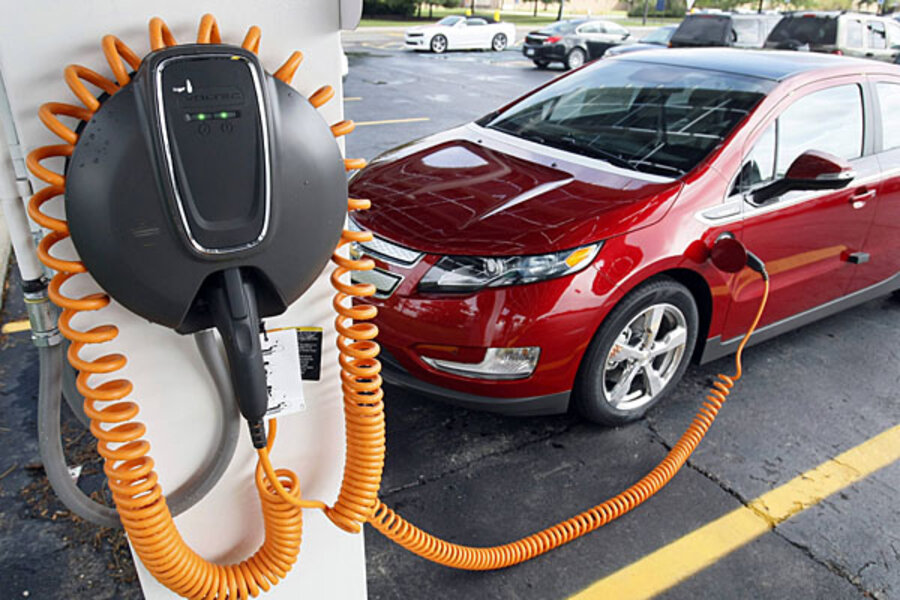Tesla 'superchargers' up the ante for green technologies
Loading...
Last October, at the official launch of the 2012 Tesla Model S, we told you about Tesla’s plans to build a network of “Superchargers”: fast-charging stations that could add up to 150 miles of range to a Model S in 30 minutes.
Yesterday, Tesla Motors [NSDQ:TSLA] launched its Supercharger network at an exclusive event at the company’s Hawthorne, California design studio.
Designed to provide up to 100 kilowatts of power, with a future capability of up to 120 kW, Tesla’s Superchargers are about twice as powerful as the Chademo rapid charging standard found on cars like the 2012 Nissan Leaf and 2012 Mitsubishi i.
Twice the power means roughly twice the range for the same amount of time spent recharging.
But while Tesla's Supercharger system has the potential to change the public perception of electric car-travel, it is proprietary to Tesla.
Today, only drivers of a 2012 Tesla Model S with an 85-kilowatt-hour battery pack can make use of the super-fast charging stations.
By the end of the year, Tesla says it will start building Model S versions with a 60-kWh pack; buyers of those cars can specify the Supercharger capability as an option.
Future Tesla models, including the Model X crossoverSUV, will be built with Supercharger compatibility in mind. But it seems unlikely that Supercharger technology will be incorporated into any non-Tesla cars.
The six charging stations launched yesterday -- carefully positioned to make it possible for Model S owners to drive between San Francisco and Los Angeles; LA and Las Vegas; and San Francisco and Lake Tahoe -- may be the first Superchargers to go online, but they won’t be the last.
By next year, Tesla has promised it will have Superchargers along other ‘high-traffic’ routes in the U.S., including one from Los Angeles to New York; a route from Vancouver to San Diego; and even Montreal all the way to Miami.
Where possible, many of the Superchargers will be powered by a solar carport built by SolarCity--which also happens to share its CEO, Elon Musk, with the startup electric-car maker.
The solar carports, Tesla says, will generate more power than will be used by the Superchargers, feeding excess energy back into the grid.
A few weeks ago, Motor Trend borrowed Musk’s personal 2012 Model S, and drove it from Los Angeles to Las Vegas on a single charge to see if it was possible.
By limited both speed and the use of air conditioning, the car arrived with range to spare, but we can’t help but feel a little sorry for the Motor Trend team.
With a Tesla Supercharger now online in Barstow, California, the trip to Las Vegas in a 2012 Model S is now easily possible--without sacrifices in speed or personal comfort.
The entire Supercharger event was webcast live, in the same air of showmanship the company used for the unveiling of the 2013 Model X crossover SUV and first deliveries of its 2012 Model S.
What will Tesla’s Supercharger network mean for Tesla owners? What will it mean for electric cars?
And, should Tesla consider licensing the Supercharger quick-charging technology to other automakers (if any were interested)?







